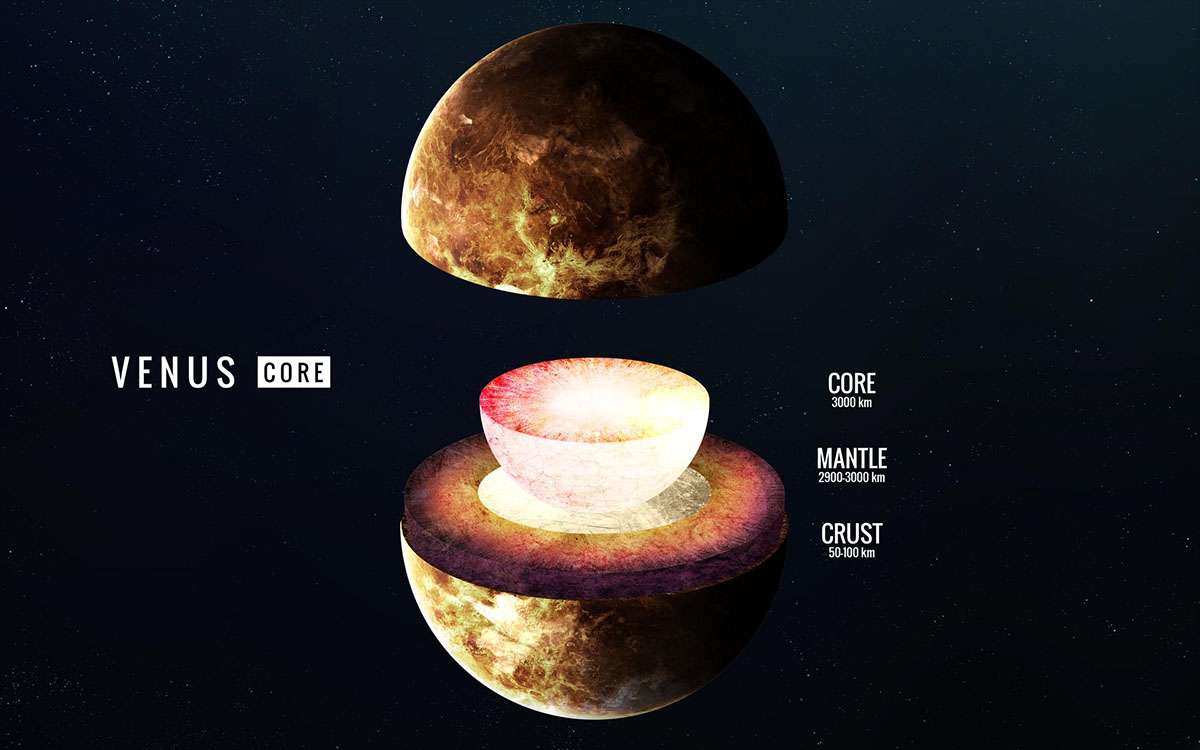when it’s what’s on the inside that counts

Two years ago, space artist Vadim Sadovsky created a series of exploded diagrams showing what lies inside of planets in our solar system based on NASA’s data. His diagram of Earth’s interior is probably fairly spot on because we’ve had seismographs mapping the planet’s layers for decades, and despite many details still left to be studied, we understand the general size and composition of the crust, mantle, and core. But what about other planets? We don’t have nearly as many seismometers on Mars, haven’t landed on Mercury, and the longest surviving Soviet probes on Venus transmitted limited data for fewer than two hours before being melted by the planet’s heat. And how can we even guess what’s inside a gas giant?
Well, much of the data about other worlds’ interiors comes from orbiting spaceships which measure their gravity in exquisite detail, giving us insights into their mass and composition by highlighting anomalies and variations we can compare to what we see right here on Earth. The same goes for data retrieved from ground penetrating radars mounted on probes that have visited planet in the inner solar system. What seismographic data we have from Mars and Venus can also be extrapolated since all rocky planets follow a similar evolutionary path and therefore have similar internal layouts.
In other words, we apply what we’ve learned from studying our own planet and the formation of solar systems to make educated guesses from the fragmentary data reported by our probes. But while that’s all well and good for terrestrial worlds, what about gas giants? Instead of being built from layers of superheated rock, they’re made of swirling gas around a massive pit of rock, iron, and ice compressed into dense layers by their own gravity. Mapping their gravity, composition, and magnetic fields allows us to understand their mass, speed of rotation, and how much heat they receive vs. emanate. We can then run experiments to replicate similar conditions on much smaller scales in labs.
In those simulations, fluids of different viscosity standing in for clouds of gases that behave like liquids under the immense pressures found under the storm belts of massive planets, organize themselves into layers and give us a likely cross-section of the gas giants we’re studying. The principle this reflects is known as differentiation, or the propensity of different solids and gases to separate into layers when subjected to stress or agitated, and since it works quite well in physics and chemistry, there’s little reason to be suspicious of using it to estimate the layout of a gas giant.
While the exact depths and temperatures shouldn’t be taken as confirmed facts, the calculated ranges are probably fairly close to reality, especially since we wouldn’t know the precise to the millimeter breakdowns unless we quite literally cut into the very center of every planet. So, the next time you see such exploded diagrams of moons, stars, and planets, don’t think of them as definitive anatomies of the objects in question, but as a demonstration of how the data gathered by our probes and telescopes over decades can be applied to basic laws of physics.





